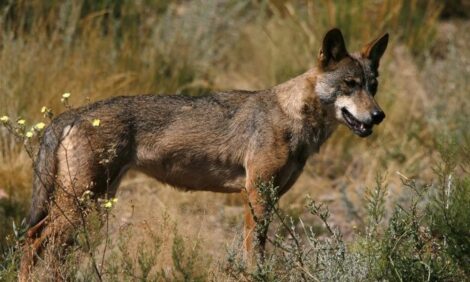



Urgent Vaccine, Equipment Needed to Contain FMD
NORTH KOREA - Around a million dollars of equipment and vaccines are urgently required to help stem outbreaks of deadly Foot-and-Mouth disease (FMD) in North Korea, followed by a more prolonged and concerted effort to modernize veterinary services in the country.A joint FAO and World Organization for Animal Health (OIE) mission travelled to North Korea at the government's request between 27 February and 8 March. The mission found that the country's capacity and that of veterinary services to detect and contain FMD outbreaks need significant strengthening -- in particular as regards implementing best-practices in biosecurity measures and improving laboratory infrastructure and capacity.
Outbreaks of Type-O FMD have been reported in diverse locations in eight of North Korea's 13 provinces. To bring the situation under control, the team recommended the following steps:
- Thorough surveillance to locate and map disease clusters
- Protecting unaffected farms through movement controls and biosecurity measures
- Adequate sampling in order to correctly identify the virus strain or strains involved
- Improving biosecurity measures to prevent further spread of the disease
- The strategic use of the appropriate vaccines to contain and isolate disease clusters
FAO estimates around $1 million is required immediately for training, supplies and infrastructure, vaccine acquisition and the setting up of monitoring, reporting and response systems.
The FAO-OIE mission visited several collective farms as well as the national veterinary laboratory and various animal health field stations.
Virus identification
FAO and OIE provided guidance to North Korean veterinary authorities on taking and handling of FMD samples - new samples will be collected by North Korea and sent to an international reference laboratory for testing.
Only by accurately typing the virus or viruses involved in the outbreaks will it be possible to identify the most effective vaccine to use against it.
Food security bulwark
FMD does not pose a direct health threat to humans, but affected animals become too weak to be used to plough the soil or reap harvests, suffer significant weight loss, and produce less milk. Many animals are dying from the disease.
Farm animals are crucial to food security in North Korea. Cows and oxen are primarily used for dairy production and are a key source of draft power in agricultural production. Goats and pigs, also susceptible to FMD, are important source of dairy products and meat.
Current North Korea's livestock population consists of 577,000 head of cattle, 2.2 million pigs and 3.5 million goats.
FMD affects cattle, buffaloes, sheep, goats, swine and other cloven-hoofed animals. It is highly contagious and spreads through mucus, saliva or body fluids that can contaminate materials such as clothing, crates, truck beds, and hay and be transmitted to other animals.
TheCattleSite News Desk


